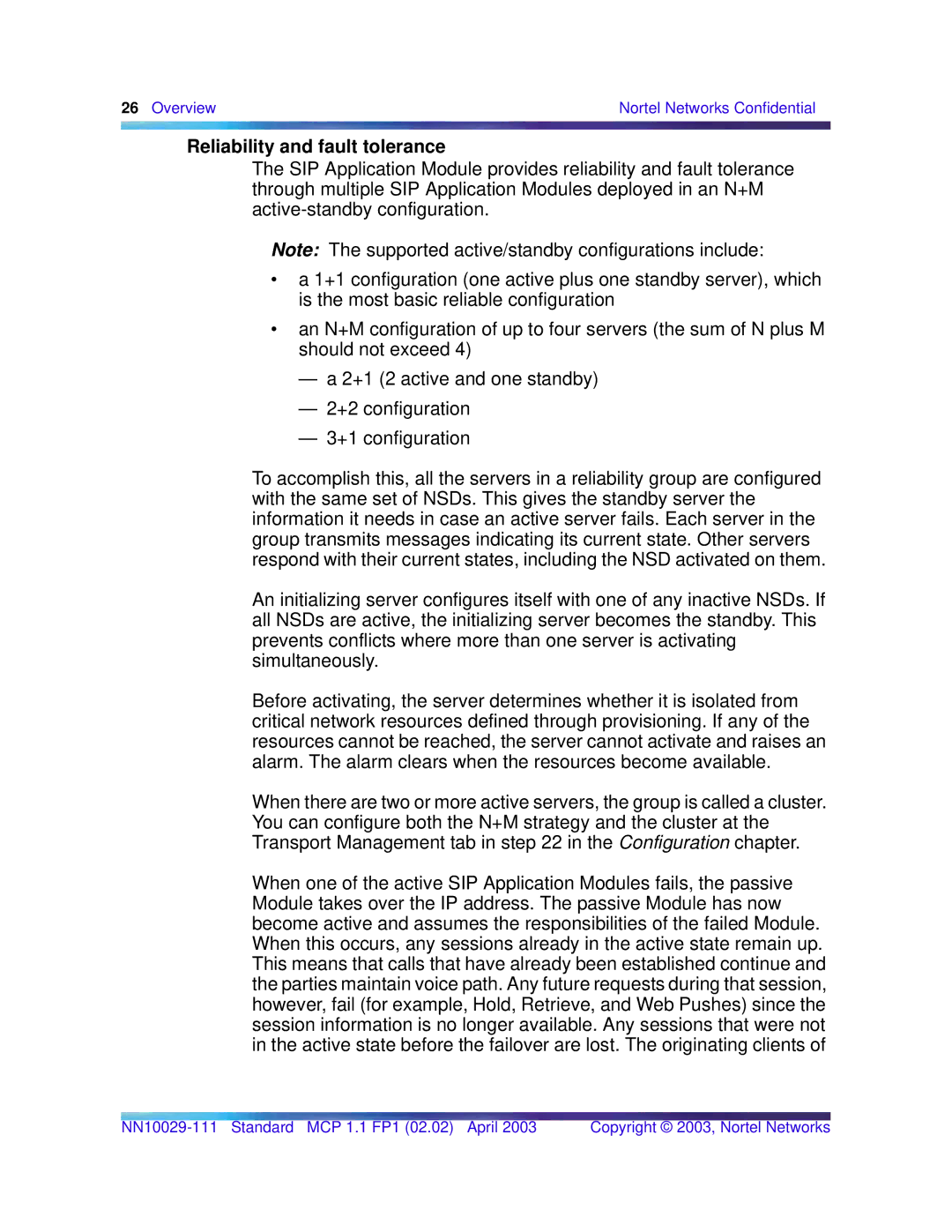
26 Overview | Nortel Networks Confidential |
|
|
Reliability and fault tolerance
The SIP Application Module provides reliability and fault tolerance through multiple SIP Application Modules deployed in an N+M
Note: The supported active/standby configurations include:
•a 1+1 configuration (one active plus one standby server), which is the most basic reliable configuration
•an N+M configuration of up to four servers (the sum of N plus M should not exceed 4)
—a 2+1 (2 active and one standby)
—2+2 configuration
—3+1 configuration
To accomplish this, all the servers in a reliability group are configured with the same set of NSDs. This gives the standby server the information it needs in case an active server fails. Each server in the group transmits messages indicating its current state. Other servers respond with their current states, including the NSD activated on them.
An initializing server configures itself with one of any inactive NSDs. If all NSDs are active, the initializing server becomes the standby. This prevents conflicts where more than one server is activating simultaneously.
Before activating, the server determines whether it is isolated from critical network resources defined through provisioning. If any of the resources cannot be reached, the server cannot activate and raises an alarm. The alarm clears when the resources become available.
When there are two or more active servers, the group is called a cluster. You can configure both the N+M strategy and the cluster at the Transport Management tab in step 22 in the Configuration chapter.
When one of the active SIP Application Modules fails, the passive Module takes over the IP address. The passive Module has now become active and assumes the responsibilities of the failed Module. When this occurs, any sessions already in the active state remain up. This means that calls that have already been established continue and the parties maintain voice path. Any future requests during that session, however, fail (for example, Hold, Retrieve, and Web Pushes) since the session information is no longer available. Any sessions that were not in the active state before the failover are lost. The originating clients of
Copyright © 2003, Nortel Networks |
